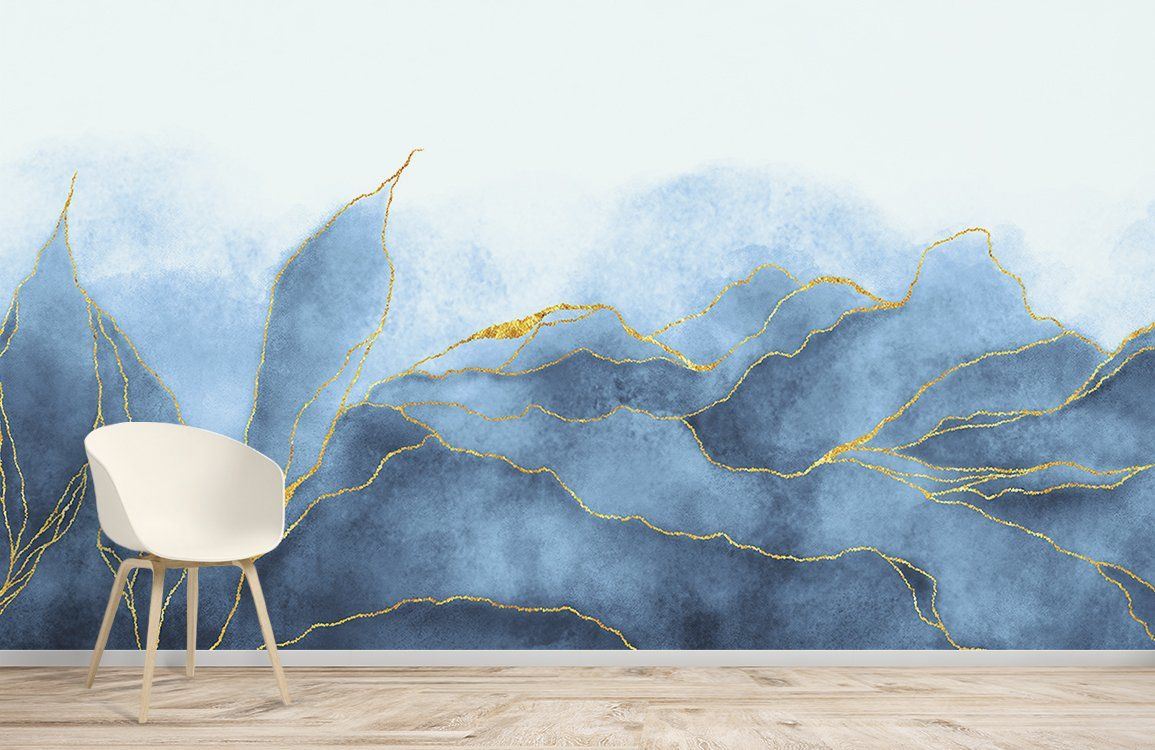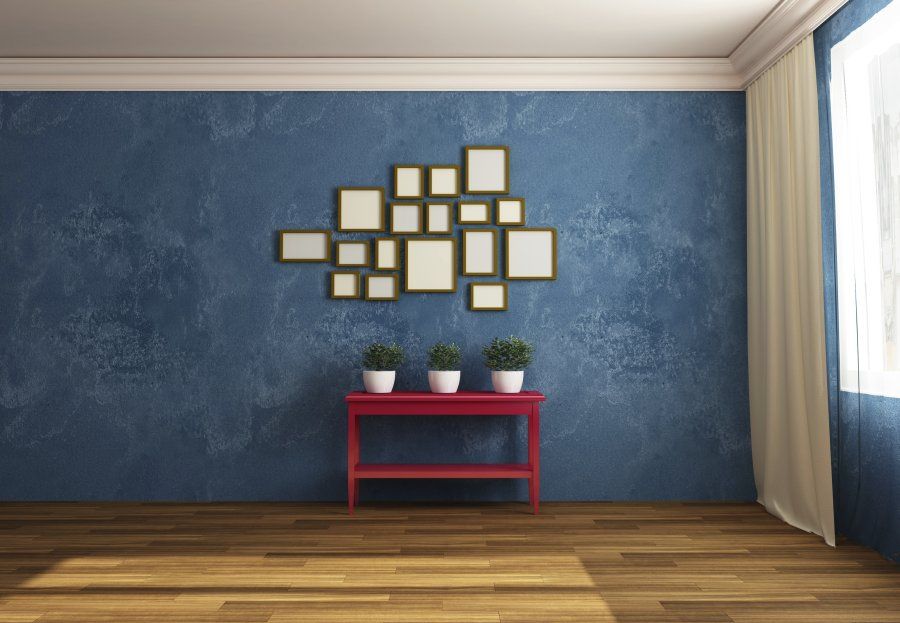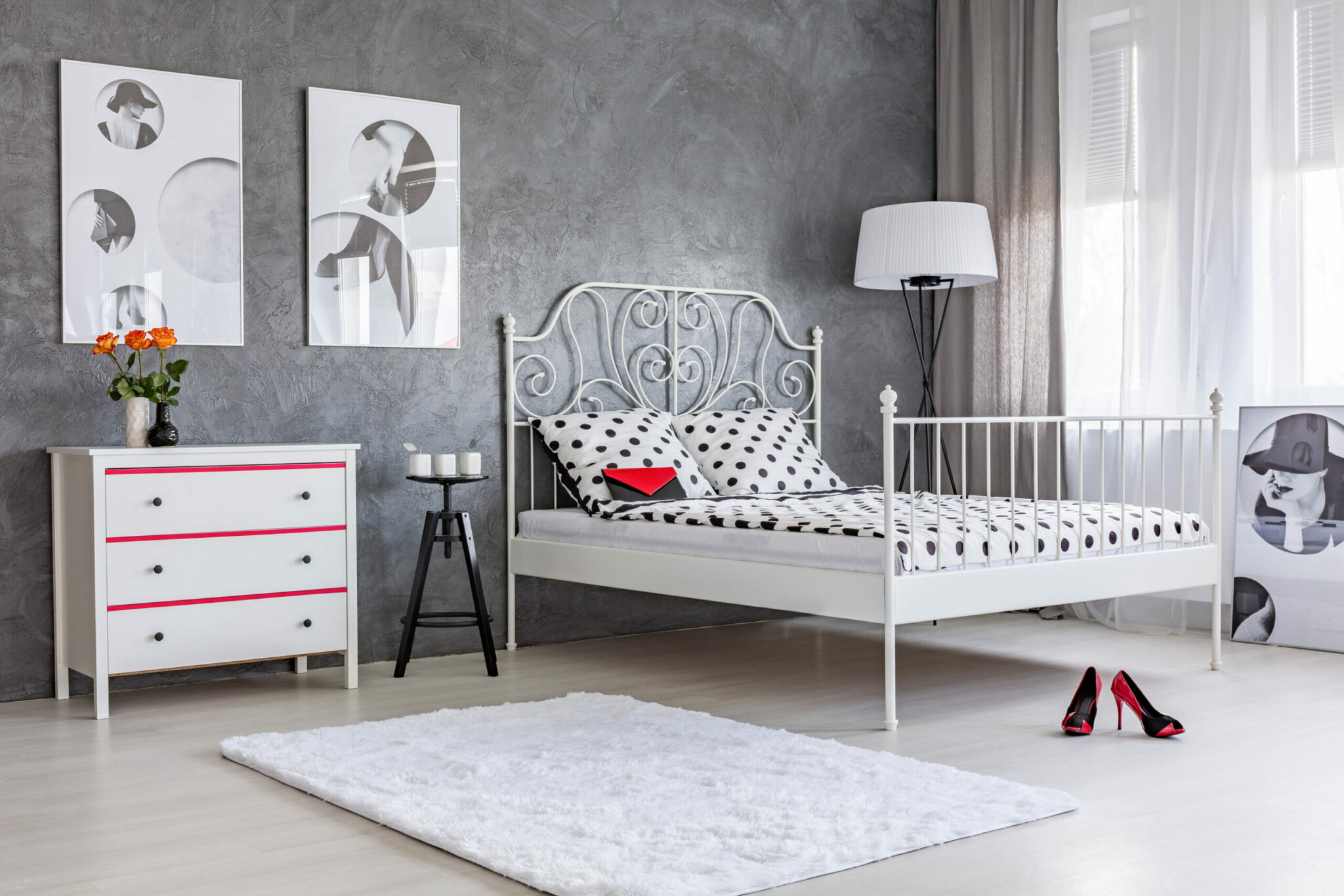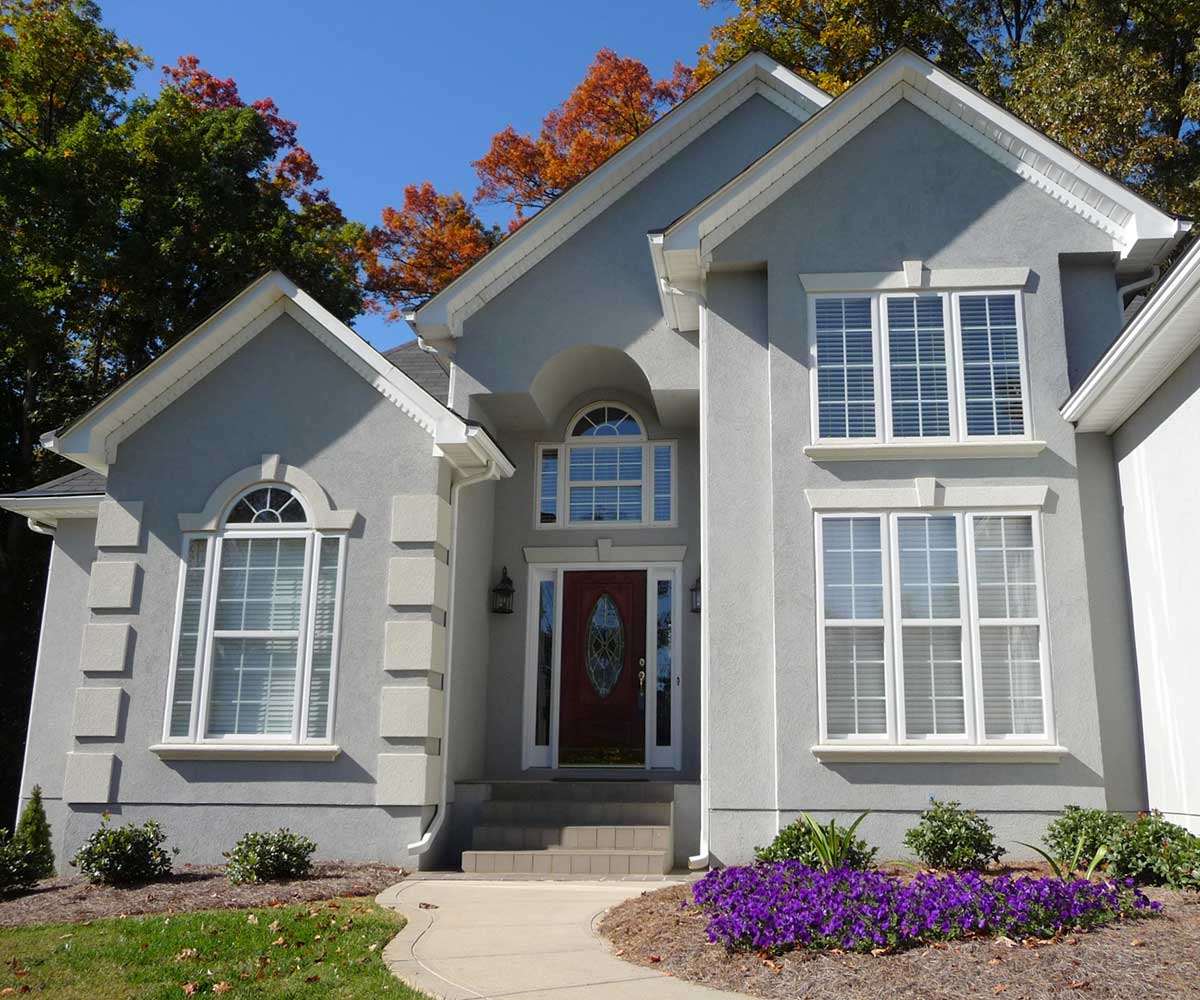Kitchen walls can often be overlooked when it comes to home décor, but they can actually make a big impact on the overall aesthetic of your kitchen. One of the most popular techniques for adding some flair to your kitchen walls is sponge painting. This method involves using a sponge to create a textured and multi-dimensional look on your walls. It's an easy and inexpensive way to add some personality to your kitchen. To achieve this look, start by choosing two or three colors that complement each other and your kitchen. Then, dip a natural sponge into your first color and dab it onto the wall in a random pattern. Next, do the same with your second and third colors, overlapping them to create a cohesive look. The end result will be a unique and eye-catching wall that will make your kitchen stand out.1. Sponge Painting Techniques for Kitchen Walls
If you want to take your kitchen walls to the next level, consider using faux finish painting techniques. This method involves creating a textured or patterned look on your walls that mimics the appearance of materials such as stone, brick, or wood. It adds depth and character to your walls without the cost and hassle of actually using those materials. There are several ways to achieve a faux finish, including sponging, rag rolling, and dragging techniques. Each technique creates a different effect, so it's important to do some research and decide which one will best suit your kitchen's style. You can also hire a professional painter to help you achieve the perfect faux finish for your kitchen walls.2. Faux Finish Painting Techniques for Kitchen Walls
Stenciling is a great way to add a personal touch to your kitchen walls. It involves using a stencil to create a repeated pattern or design on your walls. Stencils come in a wide variety of shapes and sizes, so you can choose one that fits your kitchen's theme or create your own custom stencil. To use a stencil, simply secure it to your wall with painter's tape and use a roller or brush to apply paint. Stenciling can be done with one color for a subtle look or multiple colors for a more vibrant and eye-catching design. It's a simple and budget-friendly way to add some visual interest to your kitchen walls.3. Stenciling Techniques for Kitchen Wall Decor
Color washing is a popular technique for creating a soft and subtle look on your kitchen walls. It involves applying a translucent layer of paint over a base coat, allowing the base color to show through. This creates a beautiful, washed-out effect that adds depth and texture to your walls. To achieve this look, start by painting your walls with a base color. Then, mix a small amount of your base color with a glazing medium and apply it to your walls with a brush or roller. Use a rag or cheesecloth to lightly blot the glaze, creating a soft and uneven finish. Color washing works best with neutral or muted colors and can be used to create a variety of looks, from rustic to elegant.4. Color Washing Techniques for Kitchen Walls
Strie painting is a technique that creates a subtle and elegant look on your kitchen walls. It involves using a dry brush to create thin and vertical lines that give the appearance of fabric or linen. This technique works best with matte or flat paint and can add a touch of sophistication to any kitchen. To achieve this look, start by painting your walls with a base color and allowing it to dry completely. Then, use a dry brush to apply a small amount of paint in vertical strokes, leaving some space between each stroke. Use a rough brush or a comb to drag through the paint, creating the strie effect. This technique takes some practice, but the end result is well worth it.5. Strie Painting Techniques for Kitchen Walls
Ombre is a popular trend in fashion and home décor, and it can also be applied to your kitchen walls. This technique involves blending shades of the same color from light to dark, creating a gradient effect. It's a great way to add some visual interest to a plain wall or create a statement wall in your kitchen. To achieve this look, start by painting your walls with the lightest shade of your chosen color. Then, mix a small amount of the darkest shade with the lightest shade and paint it in a band above the first color. Continue this process, gradually adding more of the darker shade, until you reach the desired ombre effect. This technique can be done with any color, so get creative and make your kitchen walls pop.6. Ombre Painting Techniques for Kitchen Walls
Rag rolling is a fun and easy way to add some texture and dimension to your kitchen walls. It involves using a rolled-up rag to apply paint in a random pattern, creating a faux finish that resembles the texture of linen or suede. This technique works well with both bold and neutral colors and can add some personality to your kitchen walls. To achieve this look, start by painting your walls with a base color and allowing it to dry. Then, dip a rag into your second color and roll it onto your walls in a random pattern. You can also use multiple colors for a more dynamic look. This technique is forgiving and can be done in a short amount of time, making it a great option for a quick and easy kitchen makeover.7. Rag Rolling Techniques for Kitchen Walls
Sponging off is a technique that creates a subtle and mottled look on your kitchen walls. It involves using a sponge to apply a second color over a base coat, and then using a damp sponge to remove some of the top layer, revealing the base color underneath. This technique works well with both warm and cool colors and can add some depth to your kitchen walls. To achieve this look, start by painting your walls with a base color and allowing it to dry. Then, use a sponge to apply a second color in a random pattern over the base coat. While the paint is still wet, use a damp sponge to gently blot and remove some of the top layer, creating a subtle and variegated effect. This technique can be used on an entire wall or as an accent in specific areas.8. Sponging Off Techniques for Kitchen Walls
Stippling is a technique that creates a speckled or dappled effect on your kitchen walls. It involves using a stippling brush or a dry brush to apply small dots of paint in a random pattern. This technique works well with both light and dark colors and can add some interest to a plain wall. To achieve this look, start by painting your walls with a base color and allowing it to dry. Then, use a stippling brush or a dry brush to apply small dots of a second color over the base coat. This technique is forgiving and can be adjusted to achieve different levels of speckling. It's a great way to add some texture and visual interest to your kitchen walls.9. Stippling Techniques for Kitchen Walls
Stucco is a popular material used for exterior walls, but it can also be applied as a decorative technique for your kitchen walls. Stucco painting involves using joint compound or plaster to create a textured and rustic look on your walls. It's a great way to add some character and charm to your kitchen. To achieve this look, start by applying a layer of joint compound or plaster to your walls with a trowel. Use the trowel to create a textured pattern, such as swirls or ridges. You can also add different colors or layers for a more dynamic look. Stucco painting can be a messy process, but the end result is a unique and visually appealing kitchen wall.10. Stucco Painting Techniques for Kitchen Walls
Kitchen Wall Painting Techniques: Transform Your Kitchen with Color

Why Painting Your Kitchen Walls is Important
 Your kitchen is the heart of your home. It's where you gather with family and friends, cook delicious meals, and create memories. So why not make it a space that reflects your unique style and personality?
Kitchen wall painting techniques
are a simple and cost-effective way to transform your kitchen and give it a fresh, new look. Not only do painted walls add color and character to your kitchen, but they also protect your walls from moisture and stains, making them a practical choice for this high-traffic area.
Your kitchen is the heart of your home. It's where you gather with family and friends, cook delicious meals, and create memories. So why not make it a space that reflects your unique style and personality?
Kitchen wall painting techniques
are a simple and cost-effective way to transform your kitchen and give it a fresh, new look. Not only do painted walls add color and character to your kitchen, but they also protect your walls from moisture and stains, making them a practical choice for this high-traffic area.
Choose the Right Paint Color for Your Kitchen
 When it comes to
painting your kitchen walls
, the first and most important step is choosing the right color. The color you choose will set the tone for your entire kitchen, so it's essential to choose wisely. Consider the overall style and color scheme of your kitchen, as well as the natural light and size of the space. For smaller kitchens, lighter colors can make the room feel more spacious, while darker colors can add warmth and depth to larger kitchens.
Some popular color options for kitchens include neutral shades like white, beige, and grey, which create a timeless and versatile canvas for your kitchen. If you want to add a pop of color, consider using a bold hue on an accent wall or painting your cabinets a different color.
Kitchen wall painting techniques
also allow you to get creative with patterns and textures, such as a striped or stenciled wall, to add visual interest and personality to your kitchen.
When it comes to
painting your kitchen walls
, the first and most important step is choosing the right color. The color you choose will set the tone for your entire kitchen, so it's essential to choose wisely. Consider the overall style and color scheme of your kitchen, as well as the natural light and size of the space. For smaller kitchens, lighter colors can make the room feel more spacious, while darker colors can add warmth and depth to larger kitchens.
Some popular color options for kitchens include neutral shades like white, beige, and grey, which create a timeless and versatile canvas for your kitchen. If you want to add a pop of color, consider using a bold hue on an accent wall or painting your cabinets a different color.
Kitchen wall painting techniques
also allow you to get creative with patterns and textures, such as a striped or stenciled wall, to add visual interest and personality to your kitchen.
Techniques for Painting Your Kitchen Walls
 Once you've chosen your paint color, it's time to decide on the
painting technique
that will best suit your kitchen. One popular technique is the "cutting in" method, which involves using a brush to paint along the edges and corners of the walls, and then using a roller to fill in the rest of the space. This technique allows for more precision and control over the finished look.
Another technique is
sponging
, where a sponge is dipped in paint and then dabbed onto the walls to create a textured effect. This technique is perfect for adding depth and dimension to your kitchen walls.
Color washing
is another popular technique that involves mixing different shades of the same color to create a subtle and artistic look.
Once you've chosen your paint color, it's time to decide on the
painting technique
that will best suit your kitchen. One popular technique is the "cutting in" method, which involves using a brush to paint along the edges and corners of the walls, and then using a roller to fill in the rest of the space. This technique allows for more precision and control over the finished look.
Another technique is
sponging
, where a sponge is dipped in paint and then dabbed onto the walls to create a textured effect. This technique is perfect for adding depth and dimension to your kitchen walls.
Color washing
is another popular technique that involves mixing different shades of the same color to create a subtle and artistic look.
Don't Forget the Prep Work
 Before
painting your kitchen walls
, it's important to do some prep work to ensure a smooth and long-lasting finish. This includes cleaning the walls thoroughly, patching any holes or cracks, and sanding down any rough spots. It's also essential to use a high-quality primer to create a smooth surface and help the paint adhere better.
In conclusion,
kitchen wall painting techniques
are an excellent way to refresh and update your kitchen without breaking the bank. With the right paint color and technique, you can create a beautiful and inviting space that reflects your personal style. So why wait? Grab a paintbrush and get ready to transform your kitchen with color!
Before
painting your kitchen walls
, it's important to do some prep work to ensure a smooth and long-lasting finish. This includes cleaning the walls thoroughly, patching any holes or cracks, and sanding down any rough spots. It's also essential to use a high-quality primer to create a smooth surface and help the paint adhere better.
In conclusion,
kitchen wall painting techniques
are an excellent way to refresh and update your kitchen without breaking the bank. With the right paint color and technique, you can create a beautiful and inviting space that reflects your personal style. So why wait? Grab a paintbrush and get ready to transform your kitchen with color!



















































/cdn.vox-cdn.com/uploads/chorus_image/image/65891620/strie_x.7.jpg)

















:max_bytes(150000):strip_icc()/Rag_roll-5b46a2fcc9e77c003783b12e.jpg)

















































